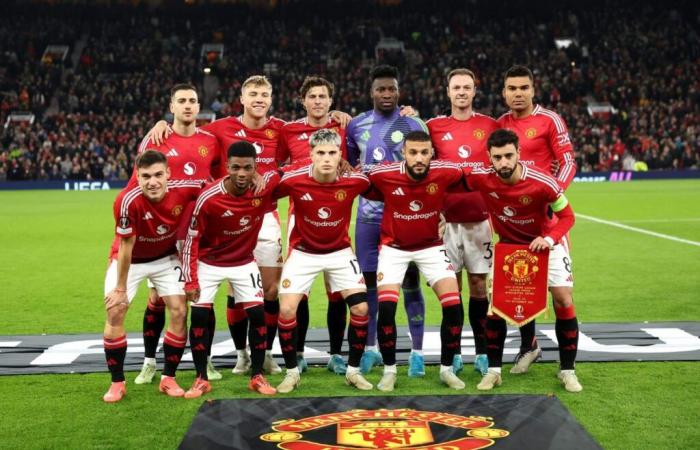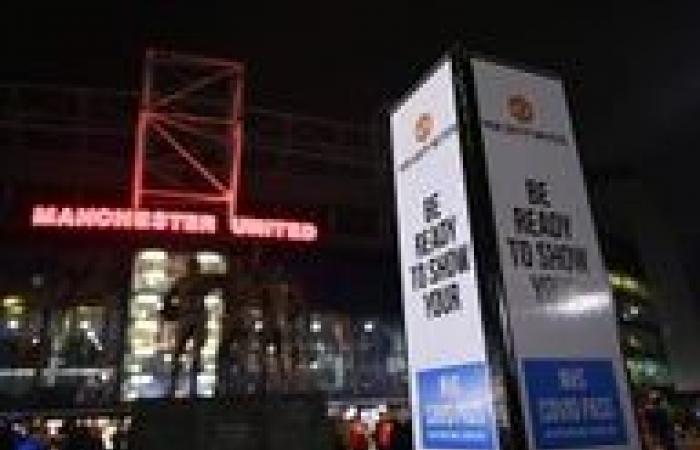Manchester United made a profit during the first quarter of the 2024-25 season, despite paying out £8.6million ($10.8m) in exceptional costs as part of restructuring measures.
The club’s new INEOS-led hierarchy under minority owner Sir Jim Ratcliffe cut 250 jobs earlier this year in an attempt to slash costs at Old Trafford.
Despite paying off staff let go as part of a redundancy scheme, United posted a first-quarter profit of £1.3m — compared to a £32.8m loss during the same period last year.
United’s latest figures do not include the compensation fee paid to Erik ten Hag following his dismissal as manager last month, of around £15m, or the €11m (£9.2m, $11.6m) fee paid to Sporting CP to appoint Ruben Amorim as his replacement.
The figure follows a total of £47.8m paid out in exceptional costs during the 2023-24 campaign, related to the strategic review process which led to Ratcliffe’s purchase of a minority stake.
GO DEEPER
Explained: Manchester United’s plan to cut 250 jobs
The Old Trafford club posted a net loss of £113m in their 2023-24 accounts but insisted that they remained compliant with financial regulations, including the Premier League’s profitability and sustainability rules (PSR).
United have posted five consecutive full-year losses since last achieving profitability during the 2018-19 season.
In the latest figures, United’s total revenues fell to £143.1m — an 8.9 per cent drop compared to the same period last season — but the club reiterated its expectation of revenues between £650m and £670m for the 2024-25 season.
Omar Berrada, United’s chief executive, said that the club’s cost-cutting and restructuring measures remain “on track”.
“The season is now well underway for both our men’s and women’s team, and we are keen to ensure both are as competitive as possible,” he said. “We are delighted to have appointed Ruben Amorim as head coach of our men’s team and remain committed to returning Manchester United to the top of domestic and European football.
“Our renovation of the Carrington Training Centre is progressing well, while the Old Trafford Regeneration Task Force continues its work.
“Once it has delivered its recommendations, we will then take some time to digest them and evaluate all our options in the upcoming year.”
Explaining Manchester United’s debt
Debt has been a thorny issue at United ever since the Glazer family’s £790m leveraged buy-out in 2005.
These latest figures also reveal United borrowed £200m over the summer through their revolving credit facility — which can be thought of like a credit card.
That is despite paying off £120m’s worth of this short-term debt in March, shortly after receiving the first tranche of the $300m that Ratcliffe promised in investment as part of his minority stake.
Another drawdown was necessary, however, to help replenish their cash reserves and fund spending in the transfer market.
United had just £73.5m worth of cash in the bank at the end of June. That figure is now up to £149.6m.
The drawdown will also have helped finance the signings of Leny Yoro, Manuel Ugarte, Matthijs de Ligt, Joshua Zirkzee and Noussair Mazraoui, which contributed to a transfer spend of £153.7m, offset by £35.6m in player sales.
United’s longer-term debt is denominated in dollars — $650m, to be precise — so its value in pound sterling fluctuates depending on changes in the exchange rate.
And despite the £200m drawdown, United’s total debt currently stands at £714m — around £20m less than the same period last year, due to favourable exchange rate fluctuations.
GO DEEPER
Explained: Manchester United’s ‘exceptional’ £40m Covid loss
(Carl Recine/Getty Images)







